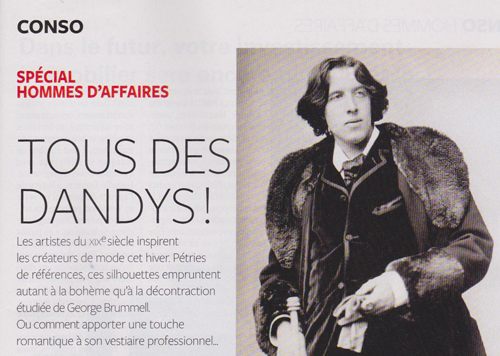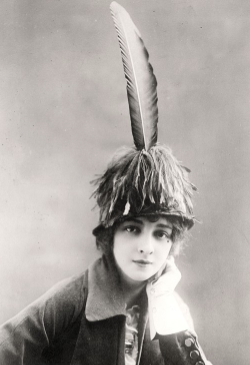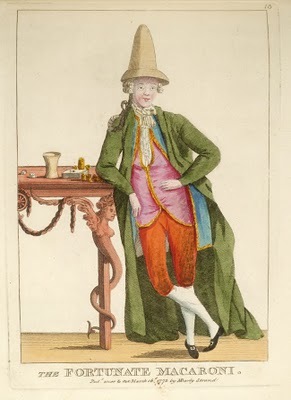
« Ou comment apporter une touche romantique à son vestiaire professionel? »
Je traduis: Comment se déguiser en « artiste » en n’étant qu’un homme d’affaire passablement grisou, avant remettre son Jogging le week-end?
Et je n’ai rien contre ou pour les hommes d’affaire(s)
Mais…
Pauvre Oscar mêlé à cette affaire! Il a un sacré vestiaire pro Oscar Sauvag quand même .
J’imagine le type de la BNP qui tout à coup porterait camées et cannes à pommeau!
Hahaha!
Tous des dandys??
Hohoho !
C’est dans l’express. Oh mais je n’avais lu que le titre. Et là:
… Manteau d’artiste aux accents de fourrure chez Lanvin….
Bon on y cite l’expo Bohêmes, Cedric Villani ( qui achète ses foulards-decidemment on mélange tout- dans cette horrible boutique de chemises à manches bouffantes à Odeon ) et John Malkovitch OK…
Mais quelle « minestrone » comme disait la dame du musée de Turin: Les manteaux, l’argent, les hommes d’affaire, les physiciens mis au même niveau et … « Le personnal shopping. « Ben oui ! vous appelez Isabelle Dubern ( agence 10 Vendôme) ( site vraiment vilain ) qui propose ses services à « une clientèle business« …
C’est le genre de page que l’on croise sur la table de la cuisine-on est encore pieds nus- et qui vous met en rogne. Pourquoi serait-on TOUS des dandys?. Le dandy c’est l’unique même, le singulier, le « martial » dans sa guerre contre l’ordinaire et l’utile.
Do you laugh at me?:

Yankee Doodle went to town,
A riding on a pony.
He stuck a feather in his hat,
And called it Macaroni.
Most American children, upon hearing the lyrics of our country’s first patriotic song, “Yankee Doodle”, ask why sticking a feather in Yankee Doodle’s hat made him into a noodle.
Too few adults can answer that in the eighteenth century “macaroni” was a term that the English borrowed from the Italians to mean a very frilly (and often silly) version of the urban dandy. It was only later that a curlicued form of pasta took on the name.
Le titre eût été Tous des Macaronis, incompréhensible au public aujourd’hui, mais ayant au fond le même sens….
On se serait amusés car être traité de Macaroni n’est plus vraiment un compliment!!!
Les Italiens en savent quelque chose.


Vous devez être connecté pour poster un commentaire.